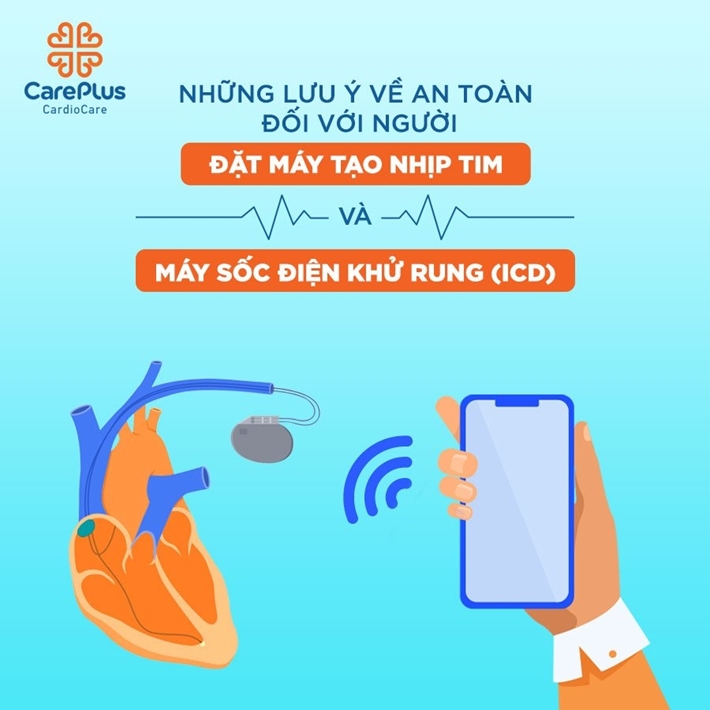Precaution for people with pacemakers and defibrillators when using smartphones and smartwatches
Người đang đặt máy tạo nhịp tim, máy sốc điện khử rung (ICD) cần tránh để các vật dụng điện tử như smartphone, smartwatch lại gần vị trí máy trong phạm vi 15cm.

9/12/2021 3:22:38 PM
Đó là khuyến cáo mới nhất từ FDA Hoa Kỳ (5/2021)
Các máy tạo nhịp tim vĩnh viễn, máy khử rung ICD là các dụng cụ y khoa được đặt vào cơ thể một số bệnh nhân có bệnh lý loạn nhịp tim nhằm thiết lập, kiểm soát nhịp, cũng như tự tạo ra sốc điện trong tình huống đột ngột xảy ra rối loạn nhịp tim nguy hiểm.
Các dụng cụ này có một chế độ hoạt động gọi là "magnet mode": khi đến gần một từ trường mạnh, máy có thể khởi động chế độ này để tạm ngưng một số chức năng của máy, dẫn đến tình huống nguy hiểm cho người sử dụng. Điều này hữu ích khi cần thực hiện các ca chụp MRI. Độ mạnh của từ trường có khả năng khởi động magnet mode là khoảng 10 Gauss (=0.001 Tesla).
Trước đây, các vật dụng đạt được mức 10G này có thể kể ra như loa âm thanh nổi, amply, hoặc cũng phải có kích thước lớn, dễ nhận diện. Tuy nhiên, theo các nghiên cứu thực nghiệm gần đây trên mẫu Iphone 12 và Apple watch 6 đời mới cho thấy các đồ điện tử này tạo ra một từ trường mạnh hơn 10G. Do vậy, nếu để tiếp xúc trong khoảng cách nhỏ hơn 6 inch (15 cm) chúng có thể kích hoạt magnet mode, làm cho các dụng cụ này ngừng hoạt động mà người dùng vô tình không biết.
Vị trí đặt máy trên ngực thường ở dưới xương đòn. Do vậy cần tránh bỏ điện thoại vô túi áo, vì nhiều khả năng không đạt được khoảng cách 15cm như khuyến cáo.